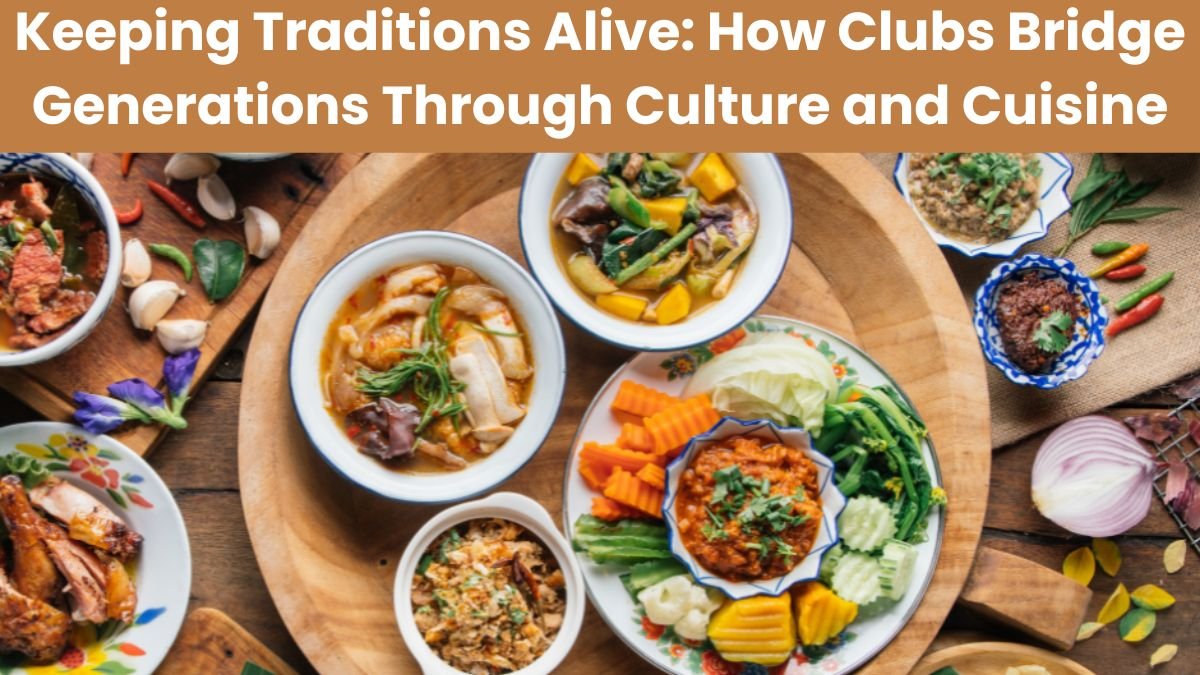In today’s digital age, where people are connected to each other through social media and technology, traditional cultural and social institutions are slowly disappearing from people’s lives. But amidst all this, there is a legacy of clubs, which is still keeping the traditions alive. Whether it is through food, organizing festivals, or Culture programs—clubs are still a bridge in the society that creates a strong bond between generations.
Club: Not just a social institution, but a cultural heritage
When we hear the word club, the image that usually comes to mind is of sports, food, drinks and fun. But in reality, clubs are not just a social institution, but they are a responsible heritage that preserves the culture, tradition and human relations of the community. Especially in migrant communities, clubs become a platform where people can connect with their roots.
Clubs of Italian, French, Punjabi, Gujarati, Tamil, and other linguistic-cultural communities continue to play an important role in passing on traditional cuisine, customs, and cultural activities to the next generation.
- Culture and Food: An Inseparable Bond
The identity of any community is its food. Food also carries history, memories, and an emotional bond. The way traditional recipes are passed down through clubs is not just a taste—it is a story, a memory that is shared.
For example, in Italian clubs, traditional pastas, sauces, or special festive dishes such as lasagna or risotto cooked by a “nonna” (grandmother) are made together with the next generation. It is not just a cooking, but an emotional moment when a nonna passes on her experiences, memories, and recipe nuances to her granddaughter or grandson.
Club Kitchens: A Confluence of Generations
Club kitchens are different from any other kitchen. They don’t just cook food, they build relationships. Young volunteers work alongside older members, veteran cooks teach new guys how to make “pasta al dente”, or when to add cinnamon to biryani.
Many clubs hold cooking classes on weekends, where not only cooking is taught, but the story behind each recipe is also narrated. This is an experience that cannot be had from a cooking show or YouTube video. These are first-hand experiences that teach social and cultural values simultaneously.
Festivals and Events: Celebrating Tradition
Clubs play an extremely important role in organising festivals. Be it Dussehra or Diwali, Eid or Christmas, Lunar New Year or Holi—every club organises these festivals according to its community.
These events not only serve traditional cuisine, but also ensure dance, music, traditional costumes, folk songs and children’s participation. Such events bring the whole family together, and the younger generation feels connected to a rich heritage, not just a language or country.
Generation-A Participation: The Future of Clubs
The strength of any club lies in its members, and the future lies in its youth. Today’s youth are busy in a fast-changing world—career, technology, social media. In such a situation, their connection with traditions is decreasing. But clubs, realizing this, have started many modern programs for the youth.
Talent shows, inter-club competitions, youth cook-offs, digital storytelling, food blogging workshops—clubs have built a bridge between tradition and modernity. This not only helps the youth understand their culture, but also inspires them to actively participate in it.
Clubs: A platform for communication
The elderly see clubs as a place where they can meet likeminded people, gossip, and overcome loneliness. The youth see it as a learning hub where they can learn something new, and create their own identity The club becomes a shared platform for experiences and energy to meet. The elderly tell stories, and the youth convert them into Instagram reels and make them viral.
Protecting local traditions in a global society
Globalization and modern lifestyles have made our society convenient, but at the same time, many local traditions and cultural values are at risk of being lost. Clubs are not just places for entertainment or social gathering—they are living museums, where culture, language, food, tradition, and sensibilities are preserved.
Many clubs promote cultural education in collaboration with local schools and institutions. They partner with local restaurants, farmers, and traditional artisans to organize food festivals and cultural exhibitions, which also promote community cohesion.
Conclusion:
In today’s fast-paced world, where everything is moving online, institutions like clubs remind us that some things can only be learned through experience—like the taste of grandma’s cooking, the smell of festivals, and the tune of traditional songs.
